Home vacuum seal units are becoming increasingly popular with sea anglers aiming to professionally prepare fish and baits for freezing. These devices vary in cost and quality, but the Eiffel Freshpack Pro sealer is about as good as it gets on performance and price says Steve Souter.
As a hopeless domestic technophobe and someone who struggles to operate the SKY Plus box at the best of times, the prospect of reviewing what is essentially a piece of kitchen equipment was almost intimidating. Being absolutely honest I was less than excited about the Eiffel Freshpack Pro Vacuum
Sealer, which had perched, still in the packaging, and gathering dust on the gear shelf while arguably more interesting tackle items were eagerly snapped up by PSF product testers. However, August deadlines meant I could put it off no longer, and to say that I misjudged the usefulness of this unassuming little unit would be to understate what will become obvious in the unfolding pictures and text.
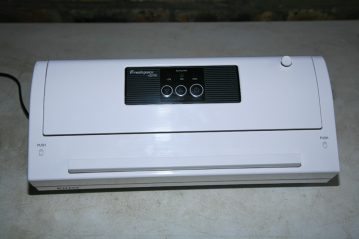
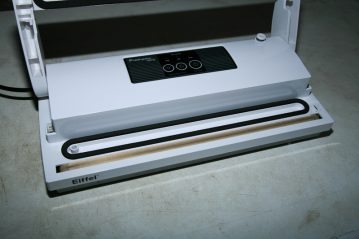
I have never owned a vacuum sealer but know plenty of anglers who do. Most use them to pack/seal fish fillets and bait, but there are numerous other applications beyond this. The general consensus is that ease of use counts for much and you get what you pay for. Operation in this case is a piece of cake, and clear, easy-to-follow instructions ensure you don’t get your knickers twisted… so long as you bother to read them!
Removing the air from perishable foodstuffs and baits preserves quality and greatly lengthens the consumable shelf life. If, like me, you collect much your own bait and insist on the best possible quality from frozen, then it makes absolute sense to investigate cost effective, home vacuum-sealing options.
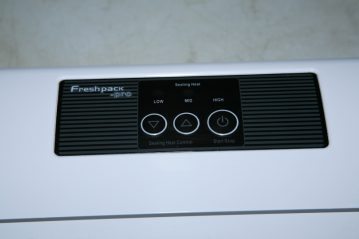

The Eiffel Freshpack Pro vacuum sealer measures 34.5cm x 15cm x 7.5cm and is a compact piece of equipment with simple, easy-reach controls. The operation panel situated on the unit hood displays three green LED indicators identifying the sealing heat selection. Below are two setting selector buttons to scroll through low, medium and high heats, and a main stop-start press button for the vacuuming process. Thankfully, there is no initial set-up required; just plug the Eiffel unit in and get straight to work.
All Shapes and Sizes
The sealer was supplied with 10 large pre-formed bags, but the choice to use ready bags, or to custom form your own to individual sizes from a bulk roll is down to personal preference. The best bags or rolls are those with an embossed criss-cross pattern on one side, which appears to assist with the suction process. One of the first things that I did was to cut one of the large bags into four and used the hot seal to ‘seam’ them and form smaller pouches. This was surprisingly easy and quick to do.
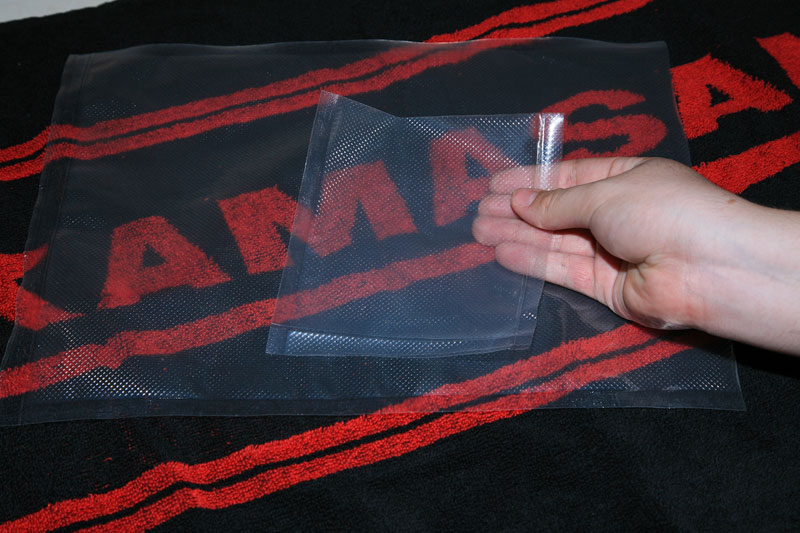
Producing your own custom bags/pouches is easy. Although pouches can be cut to length using scissors, a better finish is produced using a craft knife and a metal ruler or other straight edge. Good advice is to cut and form all the bags likely to be required before you begin a vacuum packing session.
To seam ends or sides just lay the open edge of the bag over the hot strip, ensuring that there is at least 1cm of excess material protruding over and on to the rubber seal (see picture below). Close the lid and take care to ensure that the roll or bag remains parallel to the sealing line. Depress and hold down both ends of the long bar-button at the front of the unit. The Green LED will blink for a few seconds while the bar is depressed before going out; thus indicating that the bar can be released, as the sealing process is complete.

The choice of sealing heat setting is dependent upon the thickness and quality of the plastic bag material. If the setting is not hot enough the seal will fail to seal properly, while if too hot, the plastic will melt through. Having now experimented with various thicknesses of bags and plastics, I would suggest that the middle setting is most appropriate for the better quality bags and indeed those supplied by Fresherpack.
Moisture being drawn into the vacuum chamber and compromising the sealing process in the first instance, while also having the potential to damage the unit longer term, is a common problem with vacuum sealers according to the seasoned vacuum sealers that I have spoken too. Fitted with a detachable trapping reservoir, which attaches to the base, this Eiffel sealer is better equipped than most units to contend with the problems of moisture and loose particle contamination (dust etc).


Get Packing
For wet products like fresh fish it is recommended that the whole fish or fillets are placed in the open bag and put in the freezer for about an hour. This trick will help reduce the free moisture in the bag, making vacuuming and achieving a true seal much easier. For particularly moist bait items such as peeled crabs and mussels the most efficient pre-vacuum packing preparation is to first place the bait in a grip-lock bag and leave in the freezer for an hour.
To vacuum, place the open edge of the bag into the sealer so that the edge of the bag sits fully in the vacuum chamber between the two black rubber edges. With heavy bags of bait or fish it can be useful to place a book or other flat object against the front of the packer to raise the main body of the bag to the same height at the sealing edge. * Click on the Review Gallery at the bottom of the page and scroll through for step-by-step operating instructions.

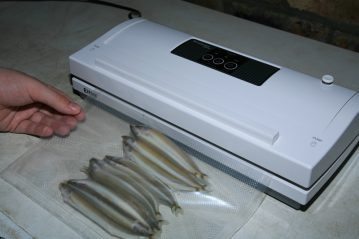
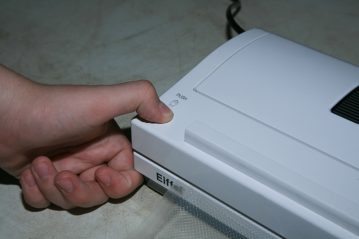

Close the lid and press each corner where indicated to lock it. Once locked press the start/stop button to begin the fully automatic one-touch vacuum and seal process. The whirring of the pump will be clearly heard as the air is extracted. Once the design pressure is reached the pump will stop, and the closing seal is automatically made. To complete, just press the vacuum release button located towards the back on the right side and remove the sealed item.


The sealing width is a massive 30cm, allowing larger items to be bagged and vac-packed with issue. Operation is quiet if not quite noiseless, and noticeably, there is no rest time required between seals, which is a recurrent gripe offered about other units by a couple of seasoned sealers in the PSF loop. Top marks for efficiency then.
Super Suction
The -0.80 bar vacuum strength is certainly impressive to witness, and in the acid test, the Eiffel was easily able to crush the hell out of an empty soft drink can in a blink. With this in mind a certain amount of care has to be exercised when packing more fragile foodstuffs, baits etc. To allow the user fuller control the vacuum process can be stopped manually at any point by simply pressing the stop button and immediately depressing the bar-button to make the finishing seal. After use the lid should be left unlocked to prevent distortion of the seal.
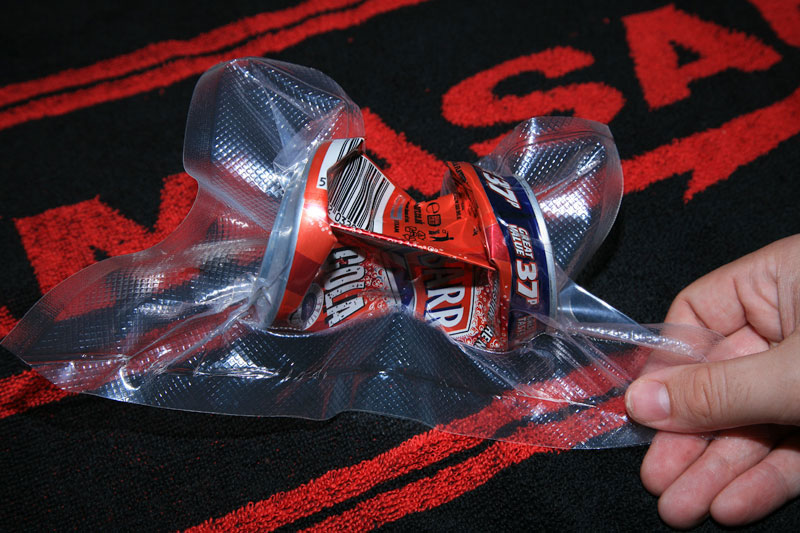
The Eiffel Freshpack Pro vacuum sealer isn’t just good… its brilliant! I hesitate to label any product idiot-proof but this neat sealer really is. And having used the unit numerous times now I have no idea how I ever managed without one. In fact, I have become a bit of a ‘bag it and seal it’ maniac!
Fish and baits for freezing aside, I have vac-packed everything including coated leads, to prevent the coloured finish bashing in transit, bottles of fish oils and sun creams which habitually split or open of their own accord, disastrously polluting the inside of tackle or cool boxes. I have even knocked out all manner of heavy-duty open-ended packets for organising various awkward booms and other odd-sized bits of gear inside a tackle box. Now, I might be courting psychiatric help but it is not often that I am this taken with any new bit of gear.



The unit on review here costs £129.50 from www.fresherpack.co.uk and UK delivery is free via the Fresherpack site. Used regularly, the chances are that the Teflon sealing strip will wear out in time and require replacing. Inexpensive replacement heat strips are priced at £1.50 each and are available from the Fresherpack website. A range of sealer bags and rolls can also be purchased from Fresherpack.




















